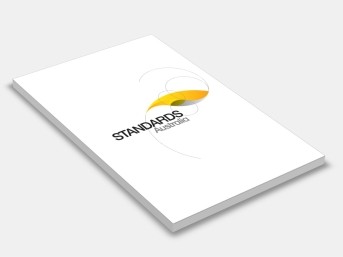AS 1926.1-2012 Swimming pool safety, Part 1: Safety barriers for swimming pools
Standards Australia
Supersedes: AS 2820-1993 AMDT 1 Swimming pool safety, Part 1: Safety barriers for swimming pools
Supersedes: AS 2820-1993 Swimming pool safety, Part 1: Safety barriers for swimming pools
Supersedes: AS 1926.1-2007 Swimming pool safety, Part 1: Safety barriers for swimming pools
Draft Designation: DR2 AS 1926.1Superseded by: AS 1926.1:2024 Swimming pool safety, Part 1: Safety barriers for swimming pools
The objective of this Standard is to assist pool owners/users in avoiding pool-related drowning by providing design, construction and performance of various barrier options, which are designed to restrict entry to the swimming pool area by young children.
This Standard is part of a series dealing with barriers, location of barriers and water recirculation and filtration systems for swimming pools, as follows.
AS
1926 Swimming pool safety
1926.1 Part 1: Safety barriers for swimming pools (this Standard)
1926.2 Part 2: Location of safety barriers for swimming pools
1926.3 Part 3: Water recirculation systems
This revision incorporates changes to the previous edition to correct and clarify many inconsistencies and areas of ambiguity. Technical and diagrammatic errors have been corrected to clarify particular safety issues. Glass barriers have been included for the first time.
This revision also incorporates the requirements for the design, construction and performance of gate units installed as part of a barrier from AS 2820, Gate units for private swimming pools.
Statistical evidence shows that the majority of drowning deaths in private swimming pools involve children under five years of age. For this reason, the requirements established by this Standard are directed at achieving a barrier that will make it difficult for a young child to gain access to a pool area, whether under, over or through the barrier.
It should be noted that the provisions of this Standard relate to barriers that are intended to be child resistant but not childproof, as effectiveness of the barrier is very much dependent on its location, installation and maintenance.
The requirements are established with the intention of leaving a high degree of flexibility to the consumer in the choice of barrier, desirable aesthetics and cost.
Requirements for the effective use of barriers in protecting children from pool hazards are given in AS 1926.2, Swimming pool safety, Part 2: Location of safety barriers for swimming pools.
In the development of this Standard reference was made to the Queensland Development Code (QDC).
The terms ‘normative’ and ‘informative’ have been used in this Standard to define the application of the appendix to which they apply. A ‘normative’ appendix is an integral part of the Standard, whereas in an ‘informative’ appendix is only for information and guidance.
Notes to the text contain information and guidance. They are not an integral part of the Standard.
Originated as AS 1926-1976 and AS 2820-1985. Previous editions AS 1926.1-2007 and AS 2820-1993. Revised, amalgamated and redesignated as AS 1926.1-2012.
This Standard specifies requirements for the design, construction and performance of barriers that will restrict the access of young children to swimming pools.
NOTE: Public swimming pools have different human dynamics, such as access for people with disabilities, increased gate usage, crowd behaviour and supervision, and the duplication of the requirements of this Standard may not always be appropriate.
Contents:
Section 1: Scope And General
Section 2: Design And Construction Of Elements Of A Barrier
Section 3: Loading Requirements
Appendix A: Test For Strength And Rigidity Of Barrier Openings
Appendix B: Strength Test For Posts And Footings
Appendix C: Strength Test For Rigid Barrier Components
Appendix D: Strength Test For Flexible Materials And Components
Appendix E: Strength Test For Rigid Components Of Gate Units
Appendix F: Test Of Durability Of Gate Units
Safety of Private Swimming Pools.
CS-034
Australian Building Codes Board; Australian Competition and Consumer Commission; Australian Industry Group; Australian Institute of Building Surveyors; Building Codes Queensland; Bureau of Steel Manufacturers of Australia; Consumers Federation of Australia; Kidsafe; NSW Department of Health; NSW Office of Fair Trading; Planning South Australia; Royal Life Saving Society Australia; Swimming Pool and Spa Association of NSW; Swimming Pool and Spa Association of Western Australia; Swimming Pool and Spa Association of Victoria.
